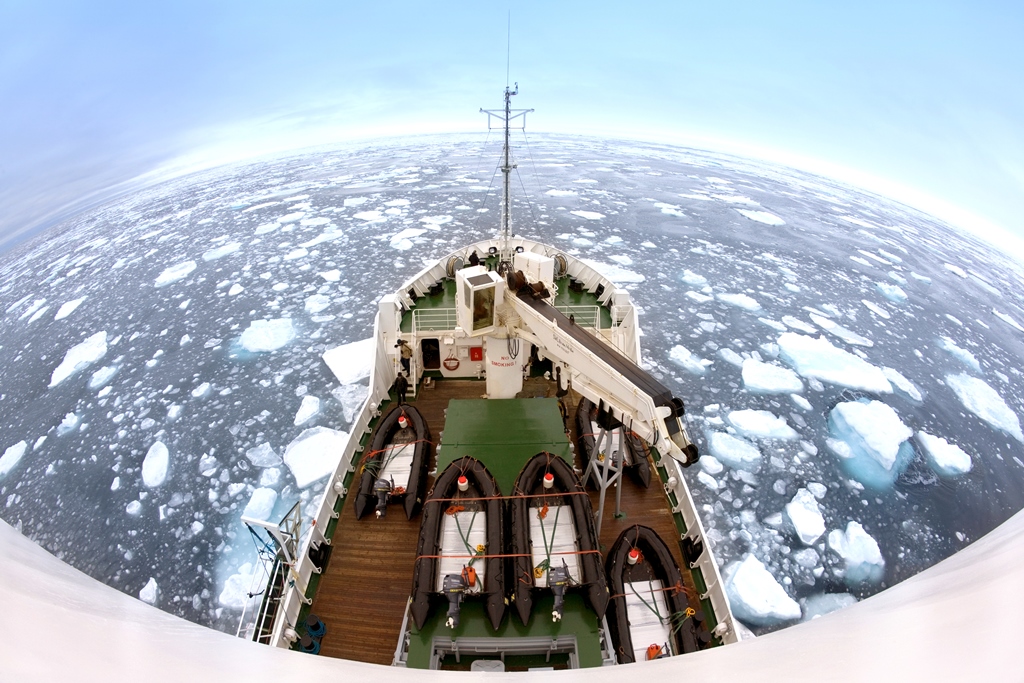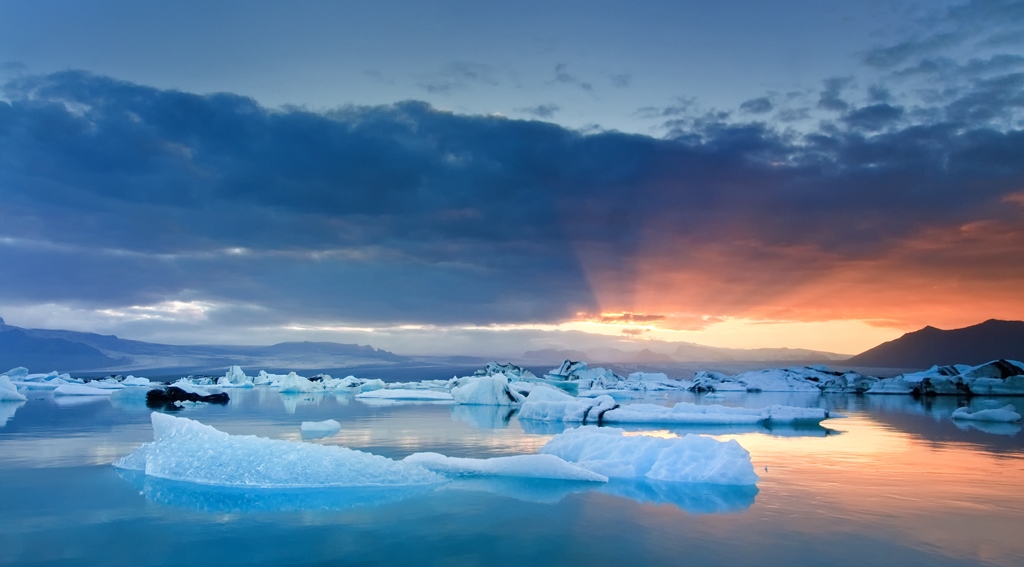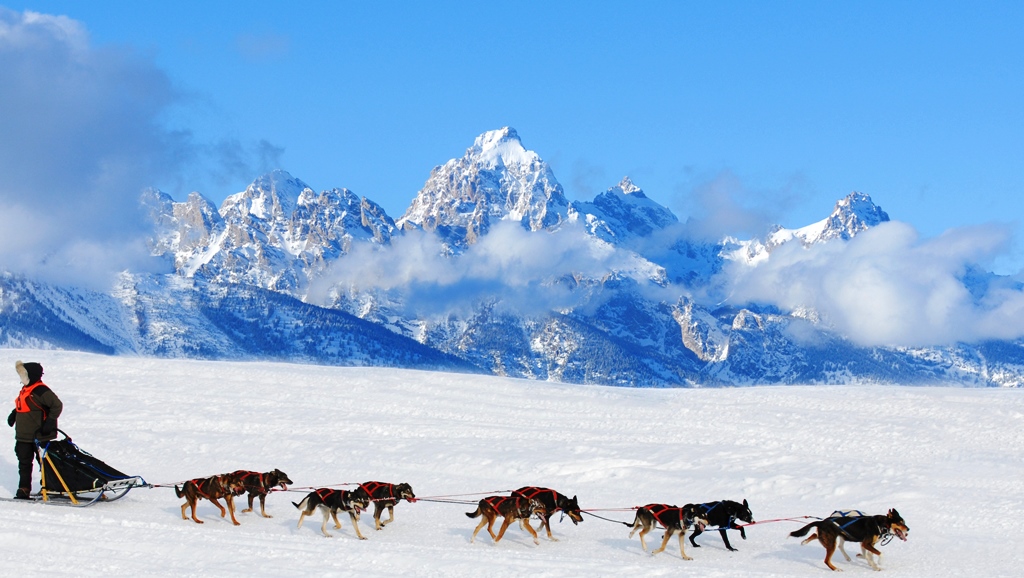- Land of the Bear – The name Arctic comes from the word ‘Arktikos’, which is Greek for ‘bear’. This is because the Great Bear constellation (Ursa Major) is seen in the northern sky. It is a polar region located in the northernmost part of the Earth.
Recommended reading by Adventure Nation.
Fish-eye lens view of sea ice off the coast of Spitsbergen (Svalbard Islands) - Midnight Sun – Most of the Arctic and the North Pole has almost six months of light each year, beginning around April. In the summer there is almost 24 hours of sunlight and it is exactly the opposite in the winter. The phenomenon is called Midnight Sun and occurs around the solstice (June 20-22). The number of days with a likely Midnight Sun increase the farther you go towards the pole. Similarly there are Polar nights in winters.
Watch this fascinating short time lapse film shot in the month of June to give you an idea about how days look like in the Arctic in peak summers.
Sun atop icebergs in Iceland - Freezing Cold – Arctic’s climate is marked by cold summers and even colder winters. Eight countries extend into the Arctic: Greenland, Iceland, Norway, Sweden, Finland, Russia, Canada and the USA (Alaska). The coldest temperature recorded in the Arctic is around -68°C in Siberia. Norilsk, Russia (located in the Arctic) is the most northern city in the world with an average temperature of 20 degrees below 0.

Siberian Huskies



